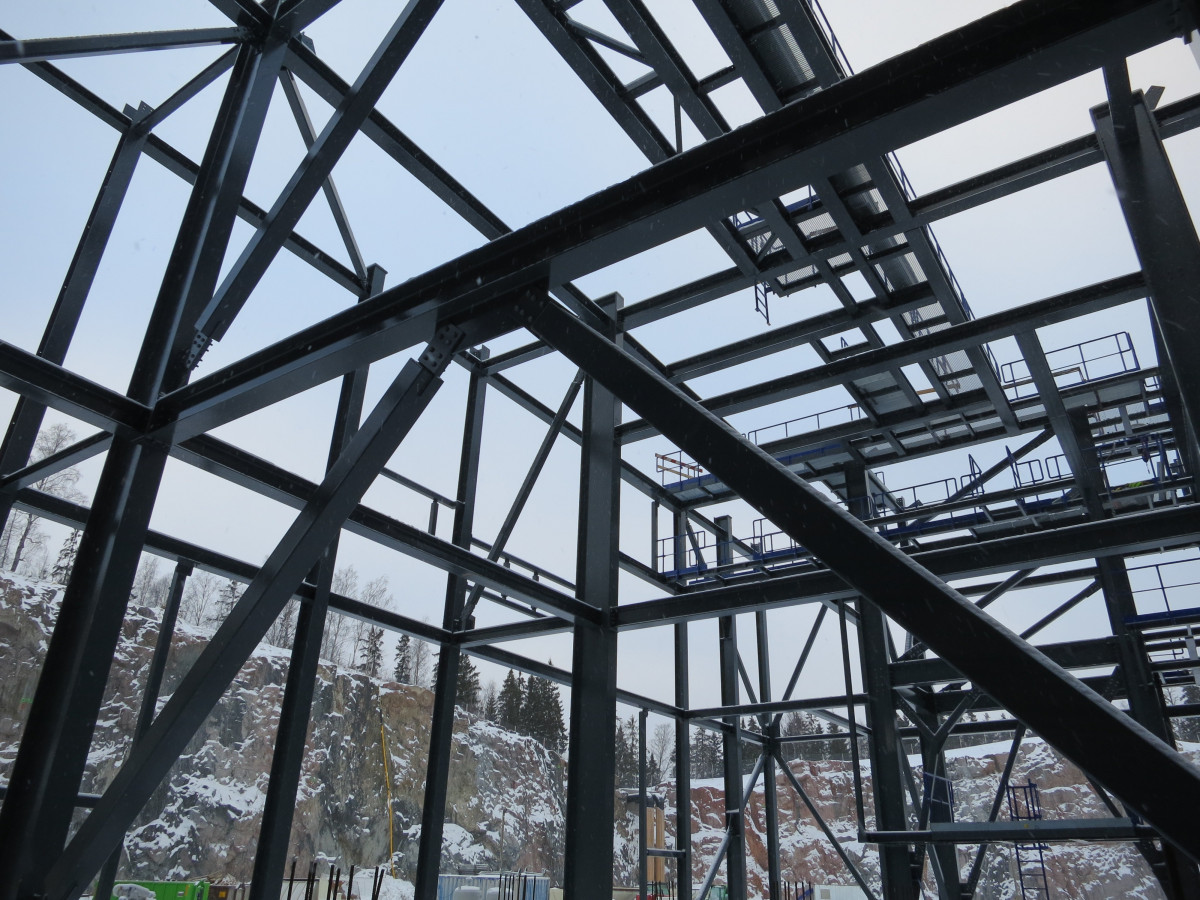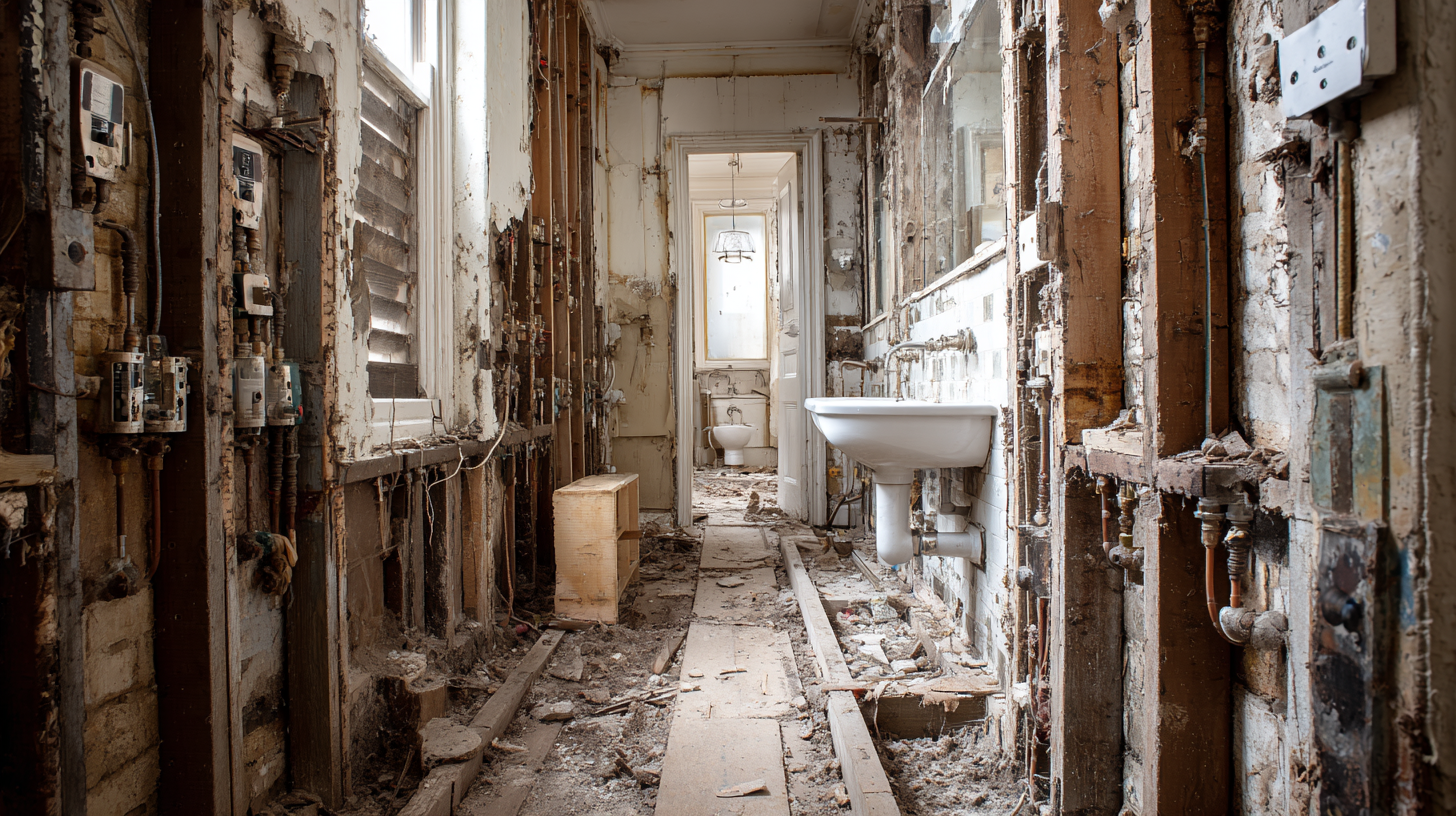💡 The Importance of Mechanical & Electrical Disconnection in Soft Strip Demolition Projects
In any soft strip demolition project, one of the most crucial and often underestimated tasks is the careful disconnection and removal of mechanical and electrical systems. While the removal of fixtures and fittings is usually the most visible part of a strip-out, it’s the hidden infrastructure—wiring, plumbing, heating, and data systems—that demands the most precision, planning, and technical know-how.
Before any refurbishment, redevelopment, or structural works can begin, the mechanical and electrical infrastructure of the building must be safely disconnected. This is not just a matter of turning off a few switches. It’s a complex and highly regulated process that, if done incorrectly, can pose serious risks to workers, building occupants, and the building itself.
Professional soft strip contractors begin the M&E disconnection process with a full assessment of the building’s existing systems. This includes identifying all electrical circuits, sockets, lighting grids, plumbing routes, HVAC systems, and any data or comms installations. These systems often run throughout the building—hidden behind walls, under floors, or above ceilings—making it essential to fully map out where and how services are connected.
Electrical disconnection is one of the first steps. Before any walls or ceilings are disturbed, qualified electricians isolate and de-energise circuits to ensure no live electricity is present. This includes power outlets, switches, distribution boards, lighting fixtures, fire alarm wiring, and sometimes integrated AV or automation systems. Temporary lighting or power may be set up if needed for ongoing site work, but only after the main systems are made safe.
Lighting systems, particularly in commercial and industrial buildings, often span entire floors or sections of a facility. Strip-out contractors carefully dismantle these systems, salvaging reusable components where possible, and ensuring that fittings containing hazardous materials—such as fluorescent bulbs—are handled and disposed of in compliance with environmental regulations.
Plumbing systems are next. This includes not just taps and toilets, but also internal pipework for water, drainage, heating, and sometimes specialist systems such as compressed air or gas feeds in industrial or medical buildings. Pipework is capped, drained, and removed systematically, ensuring no flooding or pressure damage occurs. Drain lines may need to be sealed to prevent odours or contamination during the next construction phase.
Heating, ventilation, and air conditioning (HVAC) components often form some of the largest mechanical elements to be removed in a soft strip. This can include ductwork, radiators, boilers, air handling units, fans, and ceiling-mounted units. These systems are disconnected by trained operatives with experience in dealing with pressurised systems, refrigerants, and heat exchangers. Where HVAC systems are being retained or partially reused, protective measures are put in place to shield them from damage during the rest of the strip-out.
In today’s digital age, many buildings also contain complex IT and telecommunications infrastructure. This might include server rooms, structured cabling, network switches, patch panels, and telecoms hubs. Professional soft strip teams work alongside in-house IT staff or third-party providers to decommission and remove these systems safely and in line with data protection regulations. Where infrastructure is no longer needed, cables are stripped back to their origin points to leave a clean, clutter-free environment for the next phase of installation.
One of the biggest risks in any soft strip demolition is accidental interference with live systems. That’s why experienced contractors treat M&E disconnection as a standalone phase requiring certified professionals. They use lock-off procedures, signage, and tagging systems to ensure safety is maintained across all works. Pre-strip-out audits, detailed plans, and handover documentation are used to confirm when systems are live, isolated, or removed.
Environmental compliance is also a key concern. Materials such as copper, aluminium, plastics, and electronics are segregated for recycling. Fixtures containing mercury, refrigerants, or other regulated substances are disposed of at licensed facilities. These practices ensure that the soft strip demolition supports sustainability goals while adhering to UK waste legislation.
Once disconnection is complete and all M&E infrastructure has been removed or made safe, the building is left in a decommissioned state—ready for the refurbishment or redevelopment phase. At this stage, architects, engineers, and contractors can work confidently, knowing that the risk of live systems interfering with works has been eliminated.
Whether you’re stripping out an office, retail unit, warehouse, or residential block, the mechanical and electrical disconnection process is foundational to project safety and success. Working with experienced professionals who understand the technical, legal, and environmental implications of this work ensures that your project gets off to the right start.
Contractors like SoftStripContractors.co.uk offer complete M&E disconnection services as part of their soft strip demolition packages. With a focus on safety, efficiency, and sustainability, their teams are trained to handle even the most complex systems—ensuring that your building is safely and professionally prepared for its next life.
💡 Mechanical & Electrical Disconnection FAQ
1. What is mechanical and electrical (M&E) disconnection in soft strip demolition?
M&E disconnection involves safely isolating and removing all mechanical and electrical systems within a building. This includes electrical wiring, lighting, plumbing, HVAC units, and IT infrastructure, ensuring the building is ready for refurbishment or redevelopment.
2. Why is M&E disconnection necessary before refurbishment or demolition?
Disconnecting M&E systems prevents accidents such as electric shocks, flooding, or gas leaks. It also protects equipment that needs to be retained and ensures a safe working environment for contractors.
3. Who performs M&E disconnection work?
Only qualified and certified professionals, such as licensed electricians and mechanical engineers, should carry out M&E disconnection to ensure compliance with safety regulations and standards.
4. What types of electrical systems are disconnected during soft strip demolition?
Systems include wiring, power outlets, distribution boards, lighting fixtures, emergency lighting, fire alarms, and any integrated electrical controls within the building.
5. How is electrical safety ensured during disconnection?
All electrical circuits are isolated and de-energised before removal. Lock-off procedures, warning signage, and detailed documentation ensure no accidental re-energisation occurs during demolition.
6. What happens to lighting systems during soft strip demolition?
Lighting fixtures and their associated wiring are carefully removed. Components containing hazardous substances, such as fluorescent tubes with mercury, are handled and disposed of following environmental regulations.
7. Which plumbing elements are involved in the disconnection?
Water supply pipes, drainage systems, gas pipes, heating pipes, and any specialist plumbing such as compressed air or medical gas lines are capped, drained, and removed as needed.
8. How are HVAC systems handled in the disconnection process?
Ductwork, boilers, radiators, ventilation fans, chillers, and air handling units are disconnected and removed by trained operatives. Refrigerants and other hazardous substances are safely recovered and disposed of.
9. Is it possible to disconnect M&E systems while parts of the building remain occupied?
Yes, through phased disconnection and demolition planning. Systems are isolated section by section, and protective measures reduce disruption to occupied areas.
10. What role does IT and communications infrastructure play in M&E disconnection?
Structured cabling, server rooms, switches, and communication hubs are decommissioned carefully. Coordination with IT teams ensures data security and smooth transfer or disposal of equipment.
11. How is hazardous material like asbestos handled in M&E disconnection?
Asbestos-containing materials within mechanical or electrical systems require specialist survey and removal by licensed contractors before any disconnection or demolition work begins.
12. Are there environmental considerations during M&E disconnection?
Yes. Contractors separate recyclable metals, plastics, and electronic components for recycling. Hazardous waste is managed according to strict UK environmental laws to reduce landfill and pollution.
13. How long does M&E disconnection usually take?
Duration depends on building size and complexity but typically ranges from a few days for small sites to several weeks for large commercial or industrial premises.
14. What safety regulations govern M&E disconnection?
Disconnection work must comply with the Electricity at Work Regulations, Health and Safety at Work Act, Control of Asbestos Regulations, and relevant British Standards.
15. What risks are involved if M&E disconnection is not done properly?
Risks include electrocution, fire, flooding, gas leaks, structural damage, and costly delays. Improper disconnection can also lead to legal penalties and insurance issues.
16. How do contractors ensure all systems are fully disconnected?
They conduct thorough site surveys, produce detailed disconnection plans, use tagging and lock-off systems, and perform verification tests before demolition starts.
17. Can M&E components be salvaged during soft strip demolition?
Yes. Many electrical fittings, plumbing fixtures, and HVAC units can be reclaimed for reuse or resale, reducing waste and project costs.
18. What documentation is provided after M&E disconnection?
Contractors supply certificates of disconnection, waste transfer notes, risk assessments, and method statements to demonstrate compliance and transparency.
19. How is communication handled with building occupants during M&E disconnection?
Clear communication plans keep occupants informed about shutdowns, timelines, and safety measures to minimise disruption and ensure cooperation.
20. Why is it important to hire experienced soft strip demolition contractors for M&E disconnection?
Experienced contractors bring technical knowledge, safety expertise, and efficient processes that prevent accidents, ensure compliance, and protect your investment.

